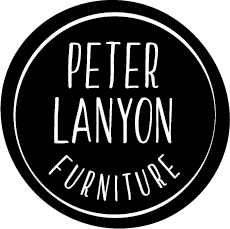On shaving wood.
This is the first of a two part blog article on shaving wood, using a shave horse and probably my favourite tool, the draw-knife This first part is about why so many people who come on my courses describe the process as “therapeutic”? The second part will look in detail at the technique and finer points of shaving wood.
Why is it so much fun?
There is a certain honesty and intimacy with wood when you begin using a draw-knife. It is sculptural work, turning a roughly cleaved piece into something with form and elegance, one stroke at a time. This skill is something which is attainable for nearly all human beings - (I have taught a few amputees), and it has the feel of honest “work”, exercising so many different muscle groups and providing a good upper body workout. It can be carried out pretty much anywhere, and is most often enjoyed outdoors. There is a certain rhythm to the work when it is going well, as we reveal each hidden layer of grain, watching shapes and patterns emerge in the newly revealed surface. We enjoy the tool marks our making leaves. The way they catch the light, and tell the story of the maker’s skill (or lack). For me there is little more soulless work than sanding wood - putting myriad scratches in the surface of something which shines with a lustre when cut with a keen-edged tool. There is a deep knowledge of wood which only comes from working it, sensitively, and attentively. And there is a wonderful satisfaction in that knowledge. The way the grain swirls around a knot can be predicted, read, and understood just by paying attention. The angle of the tool can be adjusted, the direction of the cut changed, the exact point the cut must start and stop can be deduced, and followed, resulting in a finish which if not perfect, (and what is perfection anyway) is satisfying and pleasing to the eye and touch.
It is definitely a creative process. As we shape the components for our handmade furniture we are considering their form and function, as well as how they convey the meaning of the piece we are making. Are we looking for strength and stability, lightness, elegance, or solidity. All these components need to come together towards a cohesive whole, which speaks a common design language.
One of the principal problems identified with the modern working environment is how our work is often fragmented into tiny specialisms. Each task is distanced from any discernible benefit for the end user. Shaving wood is immediate. You see the results of your efforts instantly. Whilst a piece of furniture may take several weeks to complete, there is satisfaction at every slice of the draw-knife, as we slowly and steadily turn rough bits of tree into something durable, beautiful, and useful.
Still, after so many years of making this way, I relish the prospect of a day spent on the shave horse - a cup of tea by my side, something good on the radio, and the simple pleasure of shaving and sculpting wood.
Book yourself a place on one of our shave horse making courses here or buy a voucher as a gift for someone you know.

